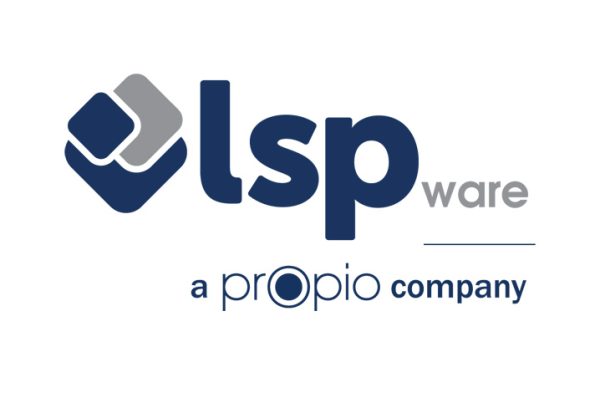A recent survey from the U.S. Census Bureau found that over 350 different languages are spoken throughout homes across the United States. Known to many as a rich melting pot of diversity, the United States is full of a wide variety of different people and cultures. Because of this, you can find a multitude of different spoken languages that may vary depending on where you find yourself in the country.
Due to just how many languages are popular in the U.S., it’s important to not only be aware of the different ones you may come across, but to also be able to communicate with prospects, clients and partners.
Whether you own a business in an area with a local client base that is densely populated with people who speak a language other than English, or you are trying to reach a bigger audience, proper communication with the people around you is crucial.
Top 10 Most Spoken Languages in the USA
Take note that our research was taken from several legitimate sources online, however, each vary and big sets of data are not always presented in real-time. In 2017, the U.S. Census Bureau published information on the number of speakers of over 350 languages as shown in the annual data from the American Community Survey (ACS) from 2009 to 2013, but it does not regularly tabulate and report data for that many languages.
Therefore, at the date of this publication, the most up to date data from the ACS is 2017 and it shows the following ten languages are the most common languages spoken at home by people aged five years of age or older:
1. English
English is by far the most prominent spoken language in the U.S., with over 239 million English-speaking people across the country. In fact, English is commonly mistaken as the official language of the United States, which doesn’t actually have an official language on record. But, English is more so an unofficial official language, as the official currency, laws, and legislation, and most streets, stores, and businesses all use English as their main form of communication. Many states have also passed individual laws stating that English is the official language there.
While there is only one form of English, the U.S. also has a wide variety of dialects, making some English speakers in different areas of the country sound much different than others. For example, the south is often known for having a much slower, thicker dialect. And, New York is known for hosting a strong, harsh accent.
2. Spanish
Spanish is undoubtedly the next most dominant spoken language in the U.S. after English. With over 41 million speakers across the country, the Spanish language and culture are prominent in a multitude of different areas, from California to New York. In fact, the United States has the second-highest population of Spanish speakers in the world. It’s no wonder Spanish translation is in such high demand.
That’s right — The United States is right behind Mexico in Spanish speakers and beats other Spanish-speaking countries such as Spain. And according to statistics, Spanish is currently one of the fastest-growing languages in the U.S. and has seen a 233% increase between the years 1980 and 2013, with no slowing down happening any time soon. Hispanic culture can be found all over the country. Popular cities and even states are named in Spanish, such as Los Angeles, Nevada, El Paso, Santa Ana, etc.
According to 2017 estimates from the Census Bureau, there are over 58.9 million Hispanics living in the United States, and by 2030, U.S. Hispanics are expected to reach more than 72 million. And, despite backlash from some groups or pockets of the population, Spanish has quadrupled in speakers over the past few decades, with predictions to hit 138 million Spanish-speakers by 2050 — which would make America the largest Spanish-speaking nation on the planet!
3. Chinese (Mandarin, Cantonese, Hokkien and More)
The Chinese language, and the different varieties within it, is another prominent player in the diverse culture of the United States. With over 3.5 million speakers across the country today, Chinese is another dominant language and is the 3rd most spoken language in the United States right now.
Chinese influence can be seen in cities where Chinese immigrants and speakers historically settled and can now celebrate their culture and heritage. Mandarin, Cantonese, and Hokkien are all different varieties of Chinese spoken in the United States, with Cantonese being the most popular.
4. Tagalog (Filipino)
Tagalog is a language that is often left out of the conversation in the media, yet is immensely prominent. In fact, Tagalog is one of the most popular languages spoken across the entire world, with millions of speakers all over. It originated in the Philippines and has become more widely used as time has gone on. With influences of both English and Spanish, Tagalog is another language popularly used here in the United States, with almost 1.7 million speakers.
Tagalog is most well-known for its use in the Philippines as its official language. The United States saw two large migrations from immigrants from the Philippines over the past century.
One of these was earlier in the 20th century where many Filipinos came to work manual labor jobs in California and Hawaii for agricultural purposes. The next was around 1960 and lasted almost 50 years, with many Filipinos coming to the states for better access to education and economic opportunities. The Philippines also created a more lenient migration policy during this time, leading to more people being able to come to the U.S.
5. Vietnamese
The number of Vietnamese speakers in the United States has been growing quite rapidly over the past few decades. Vietnamese has now become the fifth most popular spoken language in the United States, with over 1.5 million speakers. One aspect that’s believed to have helped this number increase is the reconnection of friends, family, and loved ones after the Vietnam War ended, which brought hundreds of thousands of Vietnamese immigrants to the U.S. Since 1980, the U.S. has seen around a 500% increase in Vietnamese speakers.
6. French and French Creole
French has been a common language spoken in the U.S. since its early beginnings back in the 1700s. This was when French colonizers claimed land throughout the states, such as the Louisiana Territory. While its popularity has seemingly lessened over the years, French and French Creole is still the sixth most popular language in the United States, with just over 1.2 million speakers. Along with German and Spanish, French is one of the few languages that many schools offer for their students to learn in the U.S. in both high school and college-level courses.
Creole French is a blend of French and African languages which emerged with the importation of slaves in the 1800s. Sometimes referred to as Louisiana Creole or Louisiana Creole French, this form of French is not quite as popular as basic French but finds its roots and popularity in the south.
7. Arabic
With a little more than 1.2 million speakers, Arabic has become the 7th most popular spoken language in the U.S. With some states like Michigan and New York with higher concentrations of Arabic culture, these states have some of the highest numbers of Arabic speakers from ages 5 and up. Arabic and its popularity have continued to grow over the past few decades here in the United States, seeing an increase of 29% from just 2010 to 2014
8. Korean
Korean is another language sitting at right around 1.1 million speakers throughout the U.S. The number of Korean speakers has continued to be on the rise for quite some time now and is one of the most popular languages studied, though instruction on it is not offered everywhere. Korean culture itself has continued to become more prominent in the past few decades as well, helping to make it the 8th most popular language in the U.S. right now.
9. Russian
According to the U.S. Census Bureau, almost 940,000 people across the country currently speak Russian. Between the 1970s and 1990s, a large number of Russian immigrants came to the U.S., popularizing the language and culture more. Now, the Russian language has actually seen a large increase in its prominence throughout the United States as more and more people are deciding to learn it.
The Russian language is also one of two official languages aboard the International Space Station – NASA astronauts who serve alongside Russian cosmonauts usually take Russian language courses.
10. German
Coming in at the 10th most popular spoken language in the U.S., with roughly 920,000 speakers, is German. German has been around, like French and Spanish, since the early years of the United States. While its popularity has gone up and down over the years, it still is quite popular throughout the country, especially in specific areas rich with German culture, like Milwaukee. German is one of the few languages commonly offered for students to learn in school, helping to keep the German language and culture prominent.
How an Interpreter Can Help Your Business Communicate Better
Ultimately, the United States has a variety of languages that have formed it into what it is today. With the many different languages spoken across the country, it’s crucial to be able to communicate with those around you, particularly when it comes to business and public services.
Language barriers can be extremely difficult and often create obstacles when trying to work with or communicate with someone. And while learning another language can be extremely helpful, it can also take a lot of time, which many of us, unfortunately, don’t have. Additionally, with such diversity in the languages spoken here in the US, even hiring staff to interpret for you could be nearly impossible and cost-prohibitive.
Luckily, there are companies like Propio Language Services that offer interpretation services in hundreds of different languages, including all of the most commonly spoken languages here in the United States. We understand that your language translation and interpretation service needs are specific to your industry, location, and client base. Feel free to book a free consultation with a member from our staff who can help you decide what services are best for your needs.












